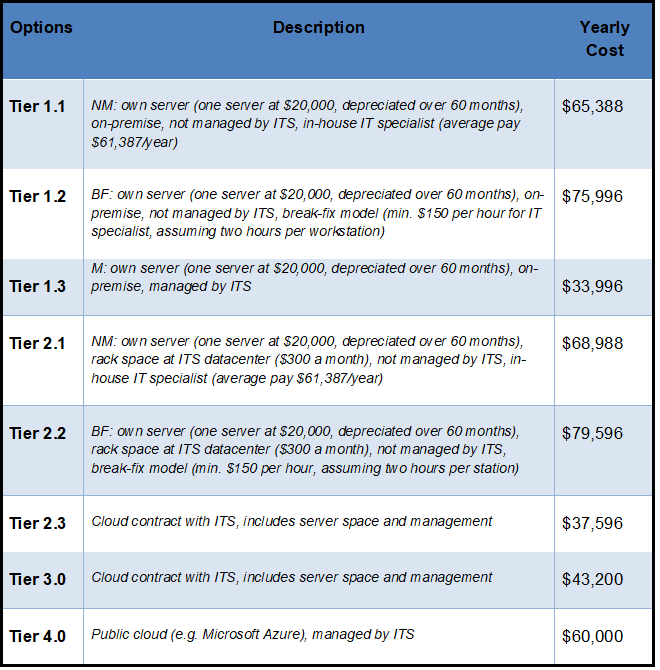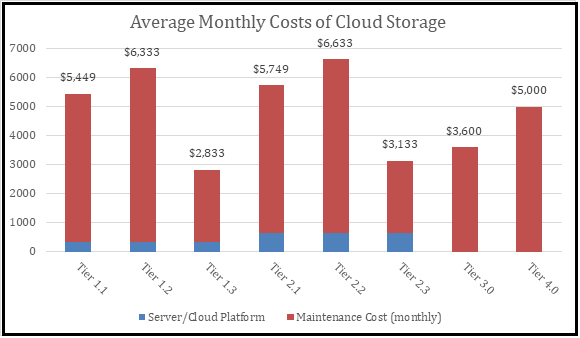How Much Will It Cost to Have Managed IT Services for the Cloud?
March 8th, 2021 | 5 min. read
By Content Team

Cloud platforms are the new black when it comes to doing business. However, because it is technology, it will require some type of management. The question is how much will it cost?
People use cloud services all the time. You may not realize it, but you are. Sure, you might store your photos and documents in OneDrive or Dropbox, but that’s not the extent of your use.
Online banking is one instance. If you have ever accessed your bank or credit card account online to check your balance or pay for a product, then you have accessed a cloud service. You might not know it, and that’s fine. You don’t have to know anything about that except that it is working smoothly. For the average person, cloud services are a CONVENIENCE.
It is otherwise for your bank, however. Any bank (or business for that matter) providing online services to their customers has to know how cloud services work. It is CRITICAL for a business today to understand data storage, access, and redundancies (more on that later) because these are crucial to how they conduct their business.
What is a cloud platform?

When we say cloud storage or cloud platform, it's really all the applications and all the data that a company has stored offsite in servers housed in a data center somewhere. When you do online banking, all of the processing, all of the storage of data security, and the backups and redundancy are all off-site. The servers are not found in the bank but are probably far away in a data center.
This sounds all well and good, right? All a business has to do is put their data and applications in the cloud, and everything will go swimmingly.
Well, no.
A lot of activity happens for data in a business, and that movement is usually through software applications, which are also in the cloud. Add to that the physical infrastructure of cloud servers and transmissions over the Internet, and you have a lot of moving parts that have to work together for everything to go smoothly.
Enter Managed IT Services
You can think of IT management services as building maintenance. A building has a lot of moving parts as well, so it takes a whole team of people (electricians, plumbers, cleaners) to keep it running, check for problems and head off potential issues by doing maintenance work.
Managed IT services do pretty much the same thing for networks and cloud storage. The only real difference is that managed IT services can be a standalone service or full service. This means that the IT service company can maintain your cloud platform for you, or it can provide you with storage as well as maintenance.
This brings us to the all-important topic of COST. How much will it cost for a business to get cloud services for their data, applications, and access? How much is cloud storage, and what are the costs of managed IT services?
Drum roll, please…
According to ITS CEO Tom Andrulis, here are the sample costs of cloud platforms and/or managed IT services. These refer to a hypothetical company with 20 workstations. The table of the costs reflects an annual basis as most businesses would probably want to include that in their yearly budget planning: Here is what it looks like. Legend: NM: Not Managed M: Managed BF: Break/Fix
Legend: NM: Not Managed M: Managed BF: Break/Fix
This is a chart of the expense in a monthly basis so you can see where your money is going in a more concrete way.
*Costs do not include software
Sharing is caring
You should also note that the conditions for Tier 1 and 2 are highly simplistic. It assumes a lot of factors that might not prove to be true. Your server could break down, for instance, in which case you will have to replace it sooner than you expect. That will drive up your costs.
Even if we live in an ideal world where all our assumptions are correct, you could still have problems, especially with the break-fix models in Tier 1.2 and 2.2. You might think you can save money if just call in an IT specialist when something goes wrong. How often will that happen, right?
Well…
A lot will have to go your way for that to be true. The reality is you could have a complete breakdown of your system at any time because no one is monitoring it for potential problems and your server has no protection. A single glitch in the software, a spike in the power, a single hacked account, even a thunderstorm, and everything could be wiped out.
Even if nothing dramatic happens to your system, small issues can easily cost you downtime, data loss, or security breaches in a break-fix model. Regular monitoring of your system is crucial for smooth operations.
Sure, having an in-house IT professional takes care of that problem. The thing is, no matter how good your IT guy is, he or she is unlikely to have the breadth of experience and knowledge of a team of IT specialists in an IT service management company. A typical IT team deals with many clients, so they are more likely to deal with issues, spot problems, or have solutions that an in-house IT may have never encountered.
At this point, we’re only comparing options based on the actual costs of the services. You are not really considering the costs of loss of access, downtime, loss of productivity, or (gasp!) loss of data because your cloud storage is not managed professionally, but that’s a subject for another article.
Finally, it is important to note that while having your own server managed by ITS (Tier 1.3) appears to be the best option in terms of cost, it has a serious downside: there are no redundancies. What is that?
It’s all about redundancy
Redundancies are simply backup systems. They are layers of protection against the unexpected that come with cloud platforms. Cloud platforms have built-in duplicate servers, firewalls, structural protections (e.g. duplicate AC units), and all the software that goes into ensuring if one system goes down, another can take its place.
This is the real reason cloud platforms are pricey. All these redundancies cost real money.
Compare Tier 3.0 (ITS) and Tier 4.0 (Microsoft Azure) in the chart. There is a considerable difference in the costs of these full-service options because Microsoft Azure has a higher level of redundancy than ITS offers. ITS data centers follow best redundancy practices that are more than sufficient for most small and medium enterprises. However, it is not to the level of Microsoft Azure and other public cloud platforms. It all boils down to value for money, and only you can determine your threshold for that.
Of course, you can have your on-premise redundancies, but you will have to shoulder all the expenses of backup servers, generators, temperature control, and so on. When you use a cloud platform, you share these expenses with all the other users of the platform.
Cost versus value

The costs of having and maintaining a cloud service are significant for any of the cloud-based tiers (or “flavors” as Tom puts it), with or without managed IT services. Is it worth it?
Well, it really depends on the value you place on your data and applications. Here are some questions Tom suggested will help you determine if cloud contracts are worth the investment:
- Is your business dependent on your data?
- Does your business rely on technology?
- What does it mean for your business if you lose your data or your technology breaks down? Will you not make or lose money? If so, is it to the extent that you will lose your business?
Based on your answers, you will be able to see for yourself if investing in technology in general and cloud services, in particular, makes sense for your business. If your business can get along perfectly well with no technology or the loss to your business is negligible when technology breaks down, then you probably don’t need to invest in the cloud or managed IT services.
However, if you answer yes to any of the questions above, then you probably need to seriously consider investing in managed IT services and cloud platforms.
Bottom line
You might be thinking: Will putting my data and applications on a cloud platform and having managed IT services monitor and maintain them guarantee nothing will go wrong?
No.
No system is perfect, and glitches can still happen even with the most expensive cloud contract out there. However, when you invest in the level of security and reliability that you need in terms of your cloud platform and IT services management, then the likelihood that anything catastrophic will happen to your data and systems is very small.
It all boils down to peace of mind. It is the same reason you buy health insurance. You’re hoping that you will never need it, but when you do, you’re glad you have it.
If you end up deciding that you need cloud services, Intelligent Technical Solutions can help your business. Contact us today!
Topics:
